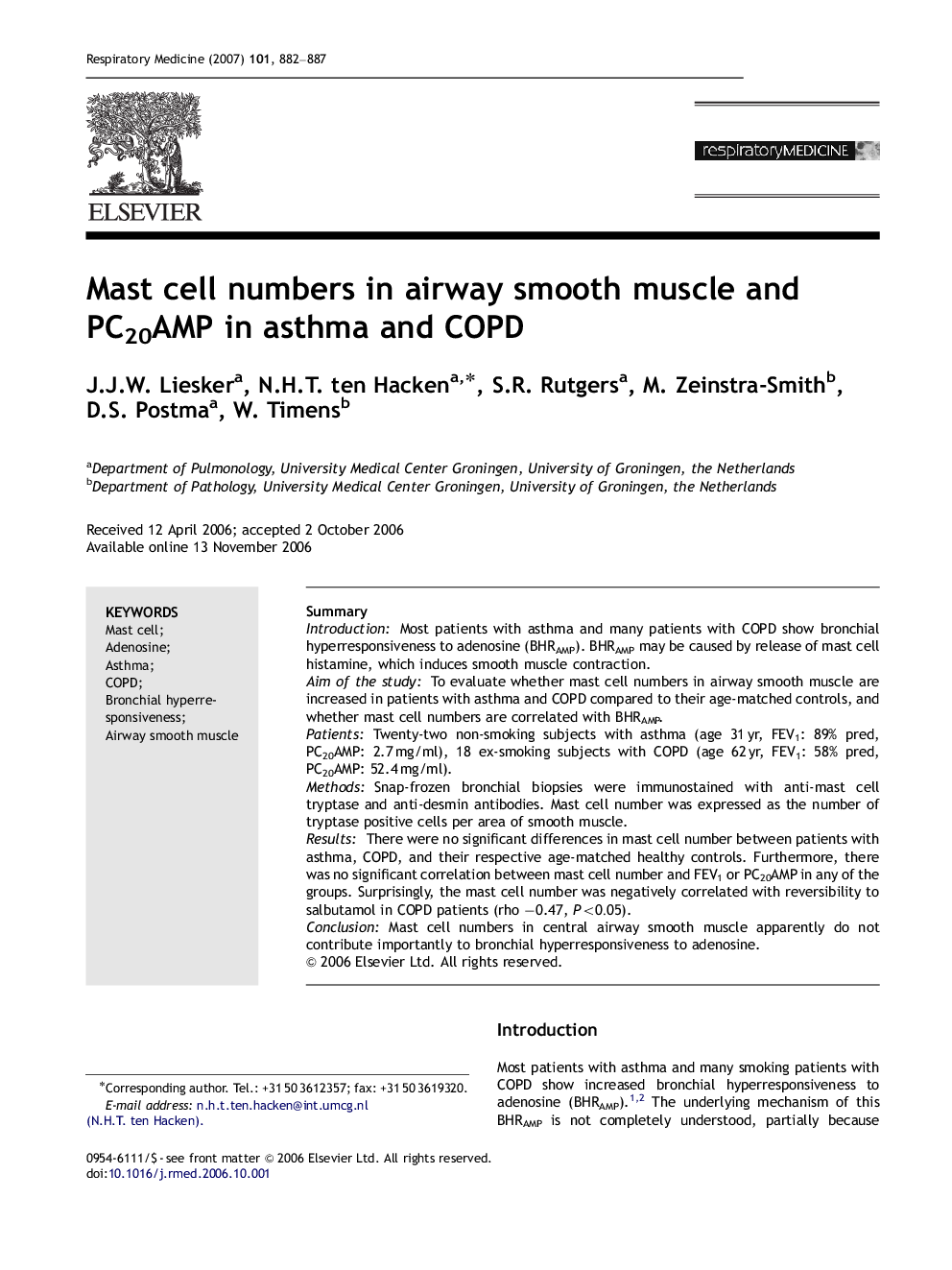| Article ID | Journal | Published Year | Pages | File Type |
|---|---|---|---|---|
| 4211859 | Respiratory Medicine | 2007 | 6 Pages |
SummaryIntroductionMost patients with asthma and many patients with COPD show bronchial hyperresponsiveness to adenosine (BHRAMP). BHRAMP may be caused by release of mast cell histamine, which induces smooth muscle contraction.Aim of the studyTo evaluate whether mast cell numbers in airway smooth muscle are increased in patients with asthma and COPD compared to their age-matched controls, and whether mast cell numbers are correlated with BHRAMP.PatientsTwenty-two non-smoking subjects with asthma (age 31 yr, FEV1: 89% pred, PC20AMP: 2.7 mg/ml), 18 ex-smoking subjects with COPD (age 62 yr, FEV1: 58% pred, PC20AMP: 52.4 mg/ml).MethodsSnap-frozen bronchial biopsies were immunostained with anti-mast cell tryptase and anti-desmin antibodies. Mast cell number was expressed as the number of tryptase positive cells per area of smooth muscle.ResultsThere were no significant differences in mast cell number between patients with asthma, COPD, and their respective age-matched healthy controls. Furthermore, there was no significant correlation between mast cell number and FEV1 or PC20AMP in any of the groups. Surprisingly, the mast cell number was negatively correlated with reversibility to salbutamol in COPD patients (rho −0.47, P<0.05P<0.05).ConclusionMast cell numbers in central airway smooth muscle apparently do not contribute importantly to bronchial hyperresponsiveness to adenosine.
